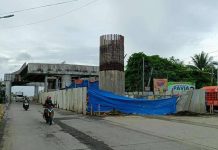
WITH NEARLY eight million population, Western Visayas is facing a silent but urgent health crisis — it has only 67 cardiologists in total. As reported by this paper yesterday, that figure already includes adult and pediatric specialists, cardiac surgeons, and anesthesiologists. The gap becomes even more worrisome when we consider that some critical subspecialties, such as electrophysiology, are barely represented — if at all.
Heart disease remains one of the leading causes of death in the Philippines, and in Western Visayas, the scarcity of specialists is a matter of life and death. For patients in far-flung areas of Antique, Guimaras, Iloilo, Aklan, and Capiz, timely access to a cardiologist is often impossible. Some have to travel hours just to get a diagnosis, let alone advanced treatments such as angioplasty or bypass surgery. By the time many reach a heart center like Western Visayas Medical Center (WVMC) in Iloilo City, their conditions have already worsened.
This shortage is a symptom of a broader national imbalance. Sixty percent of the country’s roughly 2,500 cardiologists are clustered in Metro Manila, leaving most provinces to fend for themselves. While the Department of Health’s plan to establish 17 regional heart centers is commendable, a building with modern equipment is only as good as the specialists who can use it. Without a steady supply of “home-grown” cardiologists trained and committed to serving the region, the problem will persist.
The recent accreditation of WVMC as a Philippine Heart Association (PHA) training institution is a vital first step. If we can train cardiologists within the region, they are far more likely to stay here than those recruited from elsewhere. But training alone is not enough. We must create incentives — competitive pay, research opportunities, and career advancement — to keep these specialists from moving to bigger cities or abroad.
The gaps in subspecialties like electrophysiology, which deals with the heart’s electrical system and arrhythmias, must also be addressed. These are not “optional” services; they are essential for a comprehensive cardiac care program. Without them, even a well-equipped heart center will be forced to refer patients elsewhere, losing precious time and risking lives.
If Western Visayas is to achieve the vision of “one cardiologist per city” — as PHA president Dr. Walid Amil boldly envisions — we need a regional strategy that treats cardiac health as a public health priority, not a luxury. That means sustained government funding, private sector partnerships, and community-based heart health programs that reduce the burden on specialized care facilities.
The clock is ticking — literally, for many patients. Closing the specialist gap in Western Visayas will give every Ilonggo, Antiqueñ, Aklanon, Capiznon, and Guimarasnon the fighting chance to survive a heart attack, manage chronic heart disease, and live longer, healthier lives. We cannot afford to let geography decide who gets to live and who does not.







